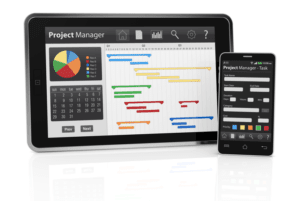
Allocation bases are known amounts that are measured when completing a process, such as labor hours, materials used, machine hours, or energy use. The more consistency there is between the total overhead and the allocation base, the more accurate the estimate of predetermined overhead will be. The concept of predetermined overhead rate is very important because it is used most of the enterprises as it enables them to estimate the approximate total cost of each job. Larger organizations employ different allocation bases for determining the predetermined overhead rate in each production department. The estimated or budgeted overhead is the amount of overhead determined during the budgeting process and consists of manufacturing costs but, as you have learned, excludes direct materials and direct labor. Examples of manufacturing overhead costs include indirect materials, indirect labor, manufacturing utilities, and manufacturing equipment depreciation.
Understanding the Predetermined Overhead Rate in Business
- The company would then estimate what the predetermined overhead cost would be and divide them to determine what the manufacturing overhead cost would be.
- Carefully tracking overhead expenses is key for small businesses to optimize costs.
- Sales of each product have been strong, and the total gross profit for each product is shown in Figure 6.7.
- This comprehensive guide breaks down overhead rate calculation into clear, actionable steps any business can follow.
Any difference between applied overhead and the amount of overhead actually incurred is called over- or under-applied overhead. A predetermined overhead rate is an allocation rate given for indirect manufacturing costs that are involved in the production of a product (or several products). Cost accountants want to be able to estimate and allocate overhead costs like rent, utilities, and property taxes to the production processes that use these expenses indirectly. To account for these changes in technology and production, many organizations today have adopted an overhead allocation method known as activity-based costing (ABC).

Allocating Overhead Costs Across Departments

Overhead expenses are items that are required to sell products and run the company in general. The cost of these items is not dependent upon the total number of units produced by the company. In other words, a company’s rent will not change if they produce 1000 units in a reporting period or if they don’t produce any units. As a result, there is a high probability that the actual overheads incurred could turn out to be way different than the estimate. Companies need to make certain the sales price is higher than the prime costs and the overhead costs. In some industries, the Food Truck Accounting company has no control over the costs it must pay, like tire disposal fees.
Conclusion: Mastering Overhead Rate Calculation for Improved Financial Health

Dinosaur Vinyl uses the expenses from the prior two years to estimate the overhead for the upcoming year to be $250,000, as shown in Figure 4.17. Cut unnecessary spending – Review budgets to identify and eliminate expenses that do not contribute real business value. If you’d like to learn more about calculating rates, check out our in-depth interview with Madison Boehm. She enjoys writing in these fields to educate and share her wealth of knowledge and experience. Learn about emerging trends and how staffing agencies can predetermined overhead rate help you secure top accounting jobs of the future. Our goal is to deliver the most understandable and comprehensive explanations of financial topics using simple writing complemented by helpful graphics and animation videos.
- The predetermined overhead rate allocates estimated total overhead for an accounting period across expected activity or production volume.
- A company’s manufacturing overhead costs are all costs other than direct material, direct labor, or selling and administrative costs.
- The formula for a predetermined overhead rate is expressed as a ratio of the estimated amount of manufacturing overhead to be incurred in a period to the estimated activity base for the period.
- If this is consistent for many projects in that department over the past year, then predetermined overhead for that department would be computed by multiplying the estimated cost for direct labor by 150%.
- Take, for instance, a manufacturing company that produces gadgets; the production process of the gadgets would require raw material inputs and direct labor.
- Further, it is stated that the reason for the same is that overhead is based on estimations and not the actuals.
Our mission is to empower readers with the most factual and reliable financial information possible to help them make informed decisions for their individual needs. Our writing and editorial staff are a team of experts holding advanced financial designations and have written for most major financial media publications. Our work has been directly cited by organizations including Entrepreneur, Business Insider, Investopedia, Forbes, CNBC, and many others. Finance Strategists is a leading financial literacy non-profit organization priding itself on providing accurate and reliable financial information to millions of readers each year. To conclude, the predetermined rate is helpful for making decisions, but other factors should be taken into consideration, too. Therefore, this predetermined overhead rate of 250 is used in the pricing of the new product.
Monitoring relative expenses
Based on the manufacturing process, it is also easy to determine the direct labor cost. But determining the exact overhead costs is not easy, as the cost of electricity needed to dry, crush, and roast the nuts changes depending on the moisture content of the nuts upon arrival. The total manufacturing overhead cost will be variable overhead, and fixed overhead, which is the sum of 145,000 + 420,000 equals 565,000 total manufacturing overhead. Based on the above information, we must calculate the predetermined overhead rate for both companies to determine which company has more chance of winning the auction. This $4 per DLH rate would then be used to apply overhead to production in the accounting period. The difference between actual and applied overhead is later assessed to determine over- or under-application of overhead.
Great! The Financial Professional Will Get Back To You Soon.
When companies begin the planning process of manufacturing a product, cost projections are a large and important focus. Calculating a predetermined overhead rate is one of the first tasks management will take on because it provides a formula to estimate the production costs of a product in advance. Specifically, the predetermined overhead rate is an approximated ratio of manufacturing overhead costs determined in advance based on variable and fixed costs. It’s essential to fully understand the allocation base and allocation rate or variance for the predetermined overhead rate. Management analyzes the costs and selects the activity as the estimated activity base because it drives the overhead costs of the unit.

How to Calculate Predetermined Overhead Rate: Formula & Uses
- Our work has been directly cited by organizations including Entrepreneur, Business Insider, Investopedia, Forbes, CNBC, and many others.
- Learn about emerging trends and how staffing agencies can help you secure top accounting jobs of the future.
- By factoring in overhead costs in this manner, the company arrives at a more accurate COGS.
- For these reasons, most companies use predetermined overhead rates rather than actual overhead rates in their cost accounting systems.
- Specifically, the predetermined overhead rate is an approximated ratio of manufacturing overhead costs determined in advance based on variable and fixed costs.
- In this example, the guarantee offered by Discount Tire does not include the disposal fee in overhead and increases that fee as necessary.
- Optimize processes – Streamline workflows around everything from inventory to invoicing to save time and cut labor costs.
The formula for a predetermined overhead rate is expressed as a ratio of the estimated amount of manufacturing overhead to be incurred in a period to the estimated activity base for the period. The company, having calculated its overhead costs as $20 per labor hour, now has a baseline cost-per-hour figure that it can use to appropriately charge its customers for labor and earn a profit. That is, the company is now aware that a 5-hour job, for instance, will have an estimated overhead cost of $100. The predetermined overhead rate formula can be used to balance expenses with production costs and sales.
Added to these issues is the nature of establishing an overhead rate, which is often completed months before being applied to specific jobs. Establishing the overhead allocation rate first requires management to identify which expenses they consider manufacturing overhead and then to estimate the manufacturing overhead for the next year. Manufacturing overhead costs include all manufacturing costs normal balance except for direct materials and direct labor. Estimating overhead costs is difficult because many costs fluctuate significantly from when the overhead allocation rate is established to when its actual application occurs during the production process.

